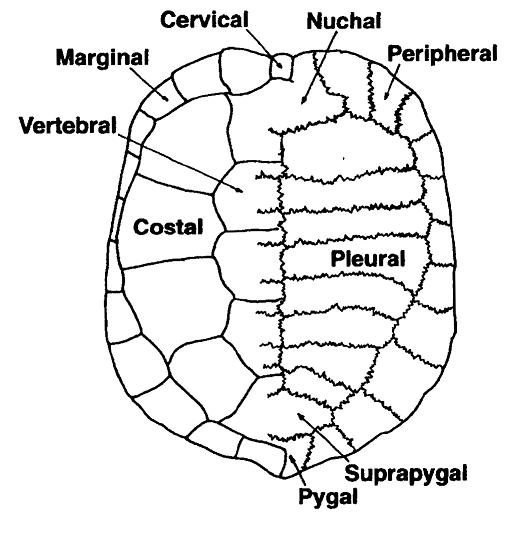Cleithrum on:
[Wikipedia]
[Google]
[Amazon]
 The cleithrum (plural cleithra) is a membrane bone which first appears as part of the skeleton in primitive
The cleithrum (plural cleithra) is a membrane bone which first appears as part of the skeleton in primitive 
 The cleithrum (plural cleithra) is a membrane bone which first appears as part of the skeleton in primitive
The cleithrum (plural cleithra) is a membrane bone which first appears as part of the skeleton in primitive bony fish
Osteichthyes (), popularly referred to as the bony fish, is a diverse superclass of fish that have skeletons primarily composed of bone tissue. They can be contrasted with the Chondrichthyes, which have skeletons primarily composed of cartil ...
, where it runs vertically along the scapula
The scapula (plural scapulae or scapulas), also known as the shoulder blade, is the bone that connects the humerus (upper arm bone) with the clavicle (collar bone). Like their connected bones, the scapulae are paired, with each scapula on eith ...
. Its name is derived from Greek κλειθρον = "key (lock)
A lock is a mechanical or electronic fastening device that is released by a physical object (such as a key, keycard, fingerprint, RFID card, security token or coin), by supplying secret information (such as a number or letter permutation or ...
", by analogy with "clavicle
The clavicle, or collarbone, is a slender, S-shaped long bone approximately 6 inches (15 cm) long that serves as a strut between the shoulder blade and the sternum (breastbone). There are two clavicles, one on the left and one on the r ...
" from Latin ''clavicula'' = "little key".
In modern fishes, the cleithrum is a large bone that extends upwards from the base of the pectoral fin
Fins are distinctive anatomical features composed of bony spines or rays protruding from the body of a fish. They are covered with skin and joined together either in a webbed fashion, as seen in most bony fish, or similar to a flipper, as se ...
and anchors to the cranium above the gills
A gill () is a respiratory organ that many aquatic organisms use to extract dissolved oxygen from water and to excrete carbon dioxide. The gills of some species, such as hermit crabs, have adapted to allow respiration on land provided they are ...
, forming the posterior edge of the gill chamber. The bone has scientific use as a means to determine the age of fishes.
The lobe-finned fishes share this arrangement. In the earliest amphibians however, the cleithrum/clavicle complex came free of the skull roof
The skull roof, or the roofing bones of the skull, are a set of bones covering the brain, eyes and nostrils in bony fishes and all land-living vertebrates. The bones are derived from dermal bone and are part of the dermatocranium.
In compar ...
, allowing for a movable neck. The cleithrum disappeared early in the evolution of reptile
Reptiles, as most commonly defined are the animals in the class Reptilia ( ), a paraphyletic grouping comprising all sauropsids except birds. Living reptiles comprise turtles, crocodilians, squamates ( lizards and snakes) and rhynchocephalia ...
s, and in amniote
Amniotes are a clade of tetrapod vertebrates that comprises sauropsids (including all reptiles and birds, and extinct parareptiles and non-avian dinosaurs) and synapsids (including pelycosaurs and therapsids such as mammals). They are dis ...
s is very small or absent.
It has been argued based on position, muscle connectivity, and developmental origin that the nuchal element of the turtle
Turtles are an order of reptiles known as Testudines, characterized by a special shell developed mainly from their ribs. Modern turtles are divided into two major groups, the Pleurodira (side necked turtles) and Cryptodira (hidden necked t ...
carapace
A carapace is a dorsal (upper) section of the exoskeleton or shell in a number of animal groups, including arthropods, such as crustaceans and arachnids, as well as vertebrates, such as turtles and tortoises. In turtles and tortoises, the unde ...
is formed from fused cleithra.

See also
* Age determination in fishReferences
{{Tetrapod osteology Skeletal system Upper limb anatomy Shoulder